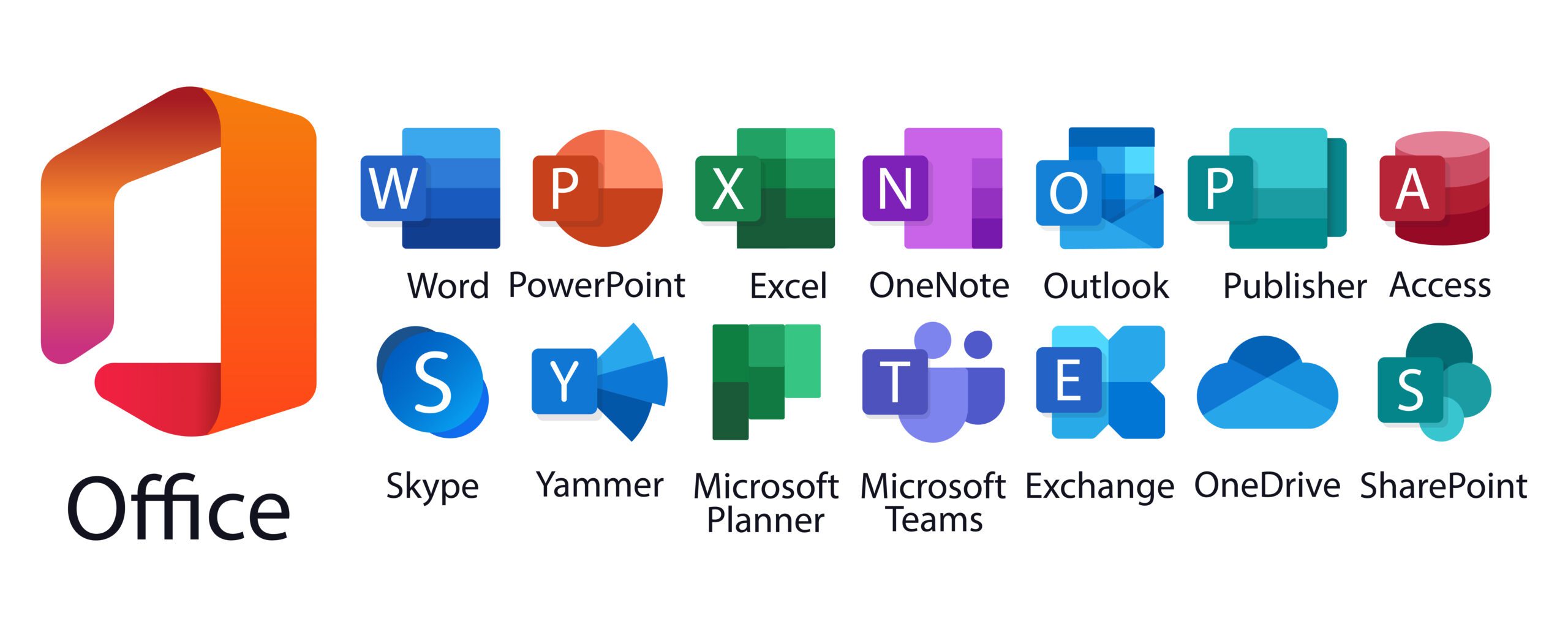How to optimize your Microsoft 365 subscription for productivity
![]() In the fast-paced landscape of modern business, where every second counts and efficiency reigns supreme, organizations are constantly seeking ways to enhance productivity and streamline operations. One powerhouse solution that has become indispensable in this pursuit is Microsoft 365. As businesses increasingly rely on this integrated suite of applications, the importance of optimizing Microsoft 365 for productivity has never been more significant.
In the fast-paced landscape of modern business, where every second counts and efficiency reigns supreme, organizations are constantly seeking ways to enhance productivity and streamline operations. One powerhouse solution that has become indispensable in this pursuit is Microsoft 365. As businesses increasingly rely on this integrated suite of applications, the importance of optimizing Microsoft 365 for productivity has never been more significant.
The potential of Microsoft 365 cannot be overstated when it comes to work efficiency. Microsoft 365, with its suite of applications like Word, Excel, Teams, and more, transcends traditional office boundaries, offering a seamless and integrated platform for communication, collaboration, and data management. By harnessing the full capabilities of Microsoft 365, organizations can break down silos, foster real-time collaboration, and streamline workflows. The ability to access, edit, and share documents in real time, coupled with robust communication features, empowers teams to work cohesively, irrespective of geographical locations. Moreover, the advanced security features of Microsoft 365 ensure that sensitive information is safeguarded, bolstering the overall efficiency of operations.
In this blog, we delve into the pivotal role that optimizing Microsoft 365 plays in unleashing the full potential of productivity within an organization. From seamless collaboration to enhanced communication and data security, the benefits are manifold, making it a cornerstone for businesses aiming to stay ahead in today’s competitive environment.
Microsoft 365, a comprehensive suite of applications that has become the linchpin for modern productivity. Among its key pillars are iconic applications like Microsoft Word, Excel, and PowerPoint, each playing a distinct role in reshaping how we create, analyze, and present information. Microsoft Word, a ubiquitous word processing tool, empowers users to craft polished documents with ease, fostering seamless collaboration and efficient document management. Excel, a powerhouse for data analysis and visualization, transforms numbers into actionable insights, making it an invaluable asset for decision-makers and analysts alike. Meanwhile, PowerPoint elevates the art of presentation, offering dynamic tools to create engaging slideshows that captivate audiences. Beyond these stalwarts, Microsoft 365 encompasses a spectrum of applications, including Teams for collaborative communication, OneNote for digital note-taking, and SharePoint for robust content management. This harmonious integration of applications under the Microsoft 365 umbrella provides organizations with a unified platform, transcending individual functionalities to create a holistic, interconnected ecosystem that fuels productivity and drives innovation in the modern workplace.

Microsoft’s collaboration tools, notably Teams and SharePoint, have redefined the landscape of workplace productivity by fostering seamless communication and streamlined information sharing. Microsoft Teams, a hub for teamwork, transcends traditional communication methods by combining chat, video conferencing, file sharing, and application integration into a unified platform. This enables teams to collaborate in real time, irrespective of geographical locations, breaking down silos and accelerating decision-making processes. On the other hand, SharePoint serves as a robust content management and collaboration platform, providing a centralized space for storing, organizing, and sharing documents and information. Its intuitive features facilitate collaborative editing, version control, and easy access permissions, ensuring that the right people have the right information at their fingertips. Together, Teams and SharePoint create a dynamic synergy, offering a comprehensive solution for modern teamwork and collaboration. The impact is profound: increased agility, improved communication, and enhanced knowledge sharing contribute to a more productive and innovative work environment, where the collective efforts of teams can flourish, driving organizational success in the digital era.
Microsoft 365 emerges as a powerful ally in achieving this goal. Leveraging the suite’s versatile features can transform routine operations into streamlined, efficient processes. One strategic approach involves mastering the art of automation through tools like Microsoft Power Automate. By automating repetitive tasks, such as data entry or email notifications, employees can reclaim valuable time and redirect their focus to more strategic initiatives. Additionally, utilizing Microsoft To-Do and Planner can aid in task organization and project management, providing clear roadmaps for daily activities. The collaborative prowess of Microsoft Teams enables real-time communication and file sharing, reducing the need for cumbersome email threads and fostering instant collaboration. Furthermore, embracing cloud storage with OneDrive ensures that documents are accessible anytime, anywhere, eliminating the hassle of searching through local files. In essence, adopting a holistic strategy that harnesses the diverse capabilities of Microsoft 365 can simplify day-to-day tasks, empowering individuals and teams to work smarter, not harder.

Organization and teams can also maximize productivity to thrive. Microsoft Teams emerges as a central hub, offering a comprehensive suite of tools to streamline collaboration and communication. To harness its full potential, teams should adopt a strategic approach. Start by utilizing channels effectively, creating dedicated spaces for specific projects or topics. This organizes discussions and ensures team members can easily access relevant information. Embrace the power of integrations, linking third-party apps and tools directly within Teams to minimize context-switching. Leverage collaborative features such as document sharing and real-time editing to foster seamless teamwork. Schedule regular virtual meetings, utilizing video conferencing and screen-sharing functionalities to enhance communication and engagement. Encourage the use of Teams’ chat features for quick updates and informal discussions, reducing the reliance on lengthy email threads. By fostering a culture of open communication and harnessing the full spectrum of Microsoft Teams capabilities, teams can truly maximize productivity in the dynamic landscape of remote collaboration.
Microsoft SharePoint emerges as a powerful ally in collaboration. The platform provides a centralized repository where files can be stored, accessed, and edited by authorized team members in real-time. Utilizing SharePoint’s version control ensures that everyone is working on the most up-to-date document, eliminating the chaos of conflicting file versions. The platform’s intuitive interface facilitates easy navigation, enabling teams to create organized document libraries and folders tailored to their specific projects. SharePoint’s integration with other Microsoft 365 apps further enhances its capabilities, allowing for smooth transitions between tasks and applications. Additionally, the built-in security measures of SharePoint ensure that sensitive information is protected, granting teams the confidence to collaborate without compromise. In essence, by embracing SharePoint, teams can not only streamline document management but also foster a culture of efficient collaboration, empowering them to achieve their collective goals with unparalleled cohesion.
While Microsoft 365 is a robust and widely used suite of productivity tools, users often encounter common issues that can disrupt their workflow. One prevalent challenge is connectivity issues, where users may face difficulties accessing or syncing their files across devices. Authentication problems can also arise, leading to login issues and restricted access to services. Another common concern involves compatibility issues, especially when working with various file formats or third-party applications. Users may encounter difficulties collaborating in real-time, with delays or disruptions in document editing and sharing. Security concerns, such as unauthorized access or data breaches, are also on the radar, prompting users to stay vigilant and implement robust security measures. Additionally, updates and software glitches can occasionally lead to performance issues or unexpected errors. Addressing these challenges requires a proactive approach, including staying informed about updates, implementing security best practices, and seeking support from Microsoft’s extensive knowledge base and support services.
Microsoft’s official support portal serves as a comprehensive hub, offering a wealth of articles, guides, and tutorials to address a myriad of issues. The Microsoft 365 community forums are also valuable platforms, enabling users to seek advice from experienced peers who may have encountered and resolved similar challenges. For more direct support, Microsoft’s customer service channels, including live chat and phone support, provide personalized assistance for complex issues. Additionally, the Microsoft 365 Status Dashboard keeps users informed about any ongoing service disruptions or outages. Regularly checking for updates and announcements on Microsoft’s official blog ensures users stay abreast of new features, fixes, and best practices. Embracing these resources empowers users to proactively troubleshoot problems, fostering a smoother and more efficient Microsoft 365 experience.
Optimizing Microsoft 365 for maximum productivity involves leveraging its vast array of tools strategically. First and foremost, prioritize effective communication and collaboration through platforms like Microsoft Teams, facilitating real-time interactions and reducing the reliance on email. Harness the power of SharePoint for seamless document management, ensuring centralized access and streamlined collaboration on projects. Embrace the versatility of OneDrive for secure file storage and sharing, fostering collaboration while maintaining data integrity. Implementing keyboard shortcuts across applications and utilizing automation through tools like Microsoft Power Automate can significantly expedite routine tasks. Time blocking within your calendar for focused work and setting clear priorities through task management apps enhance organization. Regularly explore updates and new features to stay abreast of Microsoft 365’s evolving capabilities. Finally, establish a culture of continuous learning, encouraging users to delve into the extensive resources provided by Microsoft for troubleshooting and skill enhancement. By incorporating these key takeaways, organizations can unlock the full potential of Microsoft 365, driving productivity to new heights.
Microsoft 365 for productivity is not just a matter of adopting tools; it’s about transforming the way we work.
OPTIMIZE YOUR PRODUCTIVITY WITH INFLUENTIAL SOFTWARE
Contact Influential today and let our team of Microsoft certified experts guide you through implementing the best tools to boost your organisation’s productivity and discounts on all of your new and existing Microsoft 365 licences

